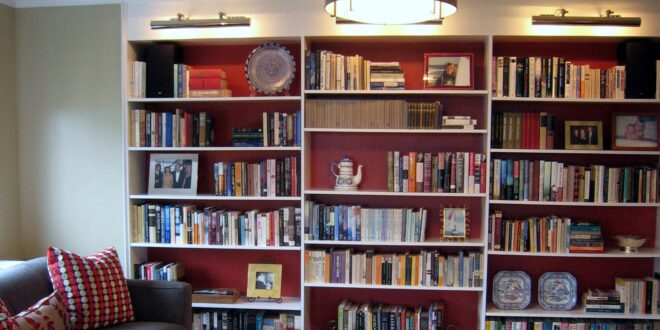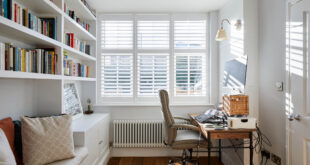Transform Your Bookshelf: More Than Just Storage
Bookshelves. They’re more than just repositories for our beloved books. They are canvases awaiting artistic expression, silent storytellers reflecting our personalities, and focal points capable of transforming an entire room. Let’s face it, a bare bookshelf, however functional, can feel…well, a little lifeless. But with a touch of creativity and a dash of inspiration, you can turn that utilitarian piece of furniture into a captivating display that speaks volumes about your style and passions.
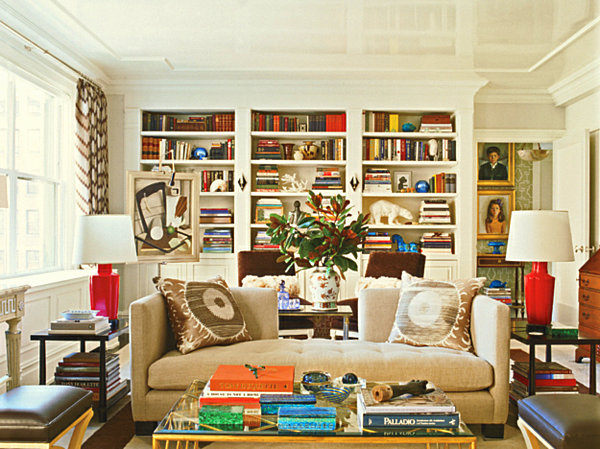
This isn’t about simply stacking books and hoping for the best. This is about crafting a visually appealing and engaging space that draws the eye and sparks conversation. Whether you’re a minimalist, a maximalist, or somewhere in between, there’s a bookshelf decorating style that’s perfect for you. We’re going to explore a treasure trove of ideas, from classic techniques to unexpected twists, to help you create a bookshelf that’s both beautiful and uniquely yours.
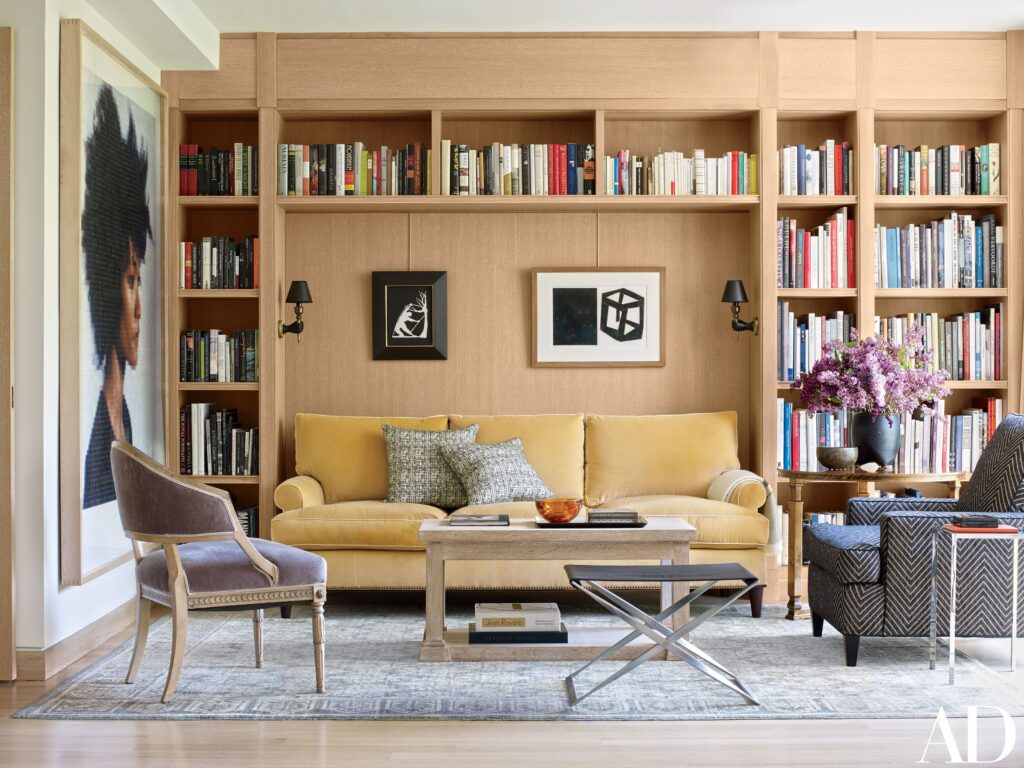
Understanding the Basics: Foundations for a Stunning Bookshelf
Before we dive into the specifics, let’s lay down some foundational principles that will guide your bookshelf decorating journey.
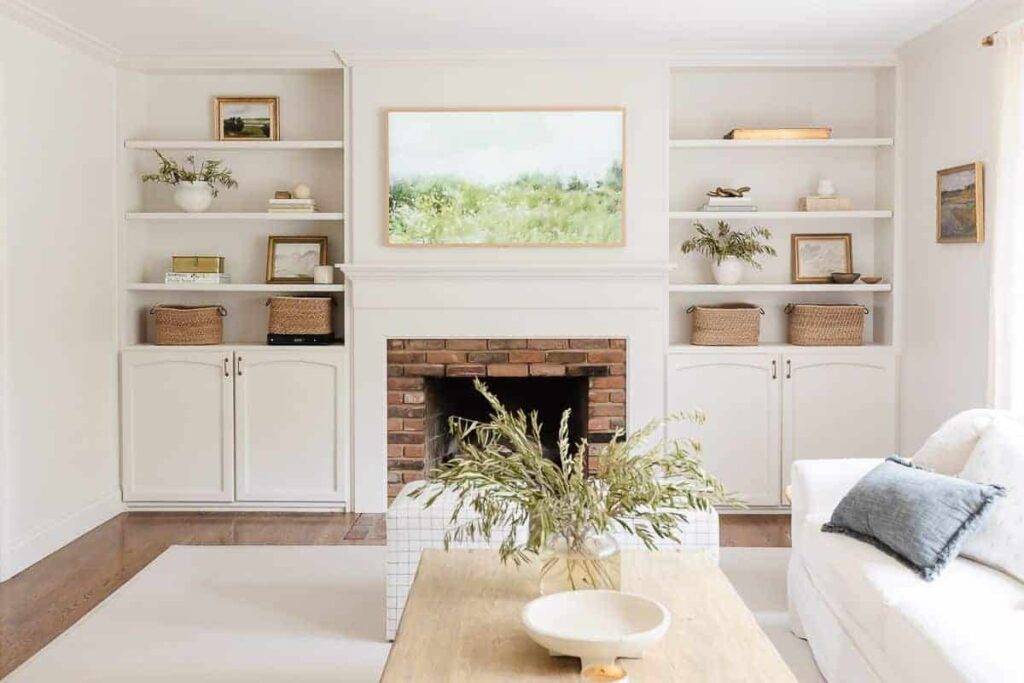
The Power of Balance and Symmetry
Visual balance is key to a pleasing aesthetic. Consider the weight and size of the objects you’re placing on your shelves. A large, heavy object on one side should be balanced by something of similar visual weight on the other. This doesn’t necessarily mean perfect symmetry, but rather a sense of equilibrium. Symmetry can create a formal and elegant look, while asymmetry offers a more relaxed and eclectic vibe. Experiment to find what resonates with your personal style.
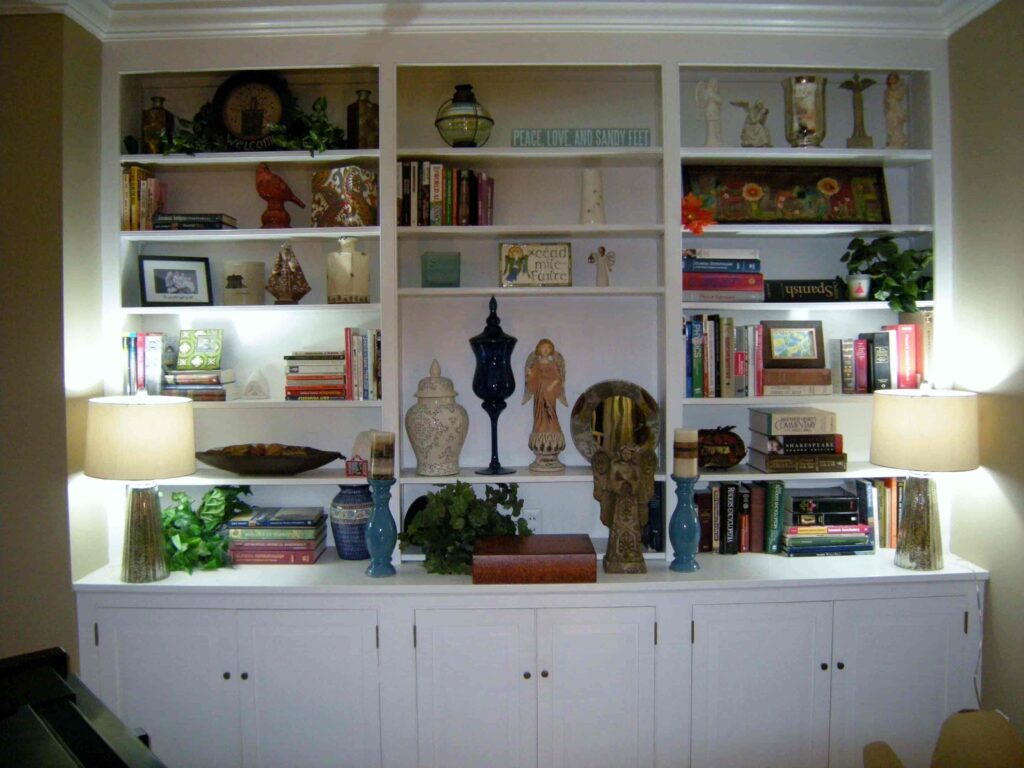
Color Harmony: Creating a Cohesive Palette
Color plays a crucial role in any design scheme, and your bookshelf is no exception. Think about the overall color palette of your room and choose items that complement it. You can opt for a monochromatic look, using different shades of the same color for a sophisticated and calming effect. Or, you can introduce pops of contrasting colors to add energy and visual interest. Pay attention to the colors of your book covers as well. Grouping books by color can create a striking visual impact.
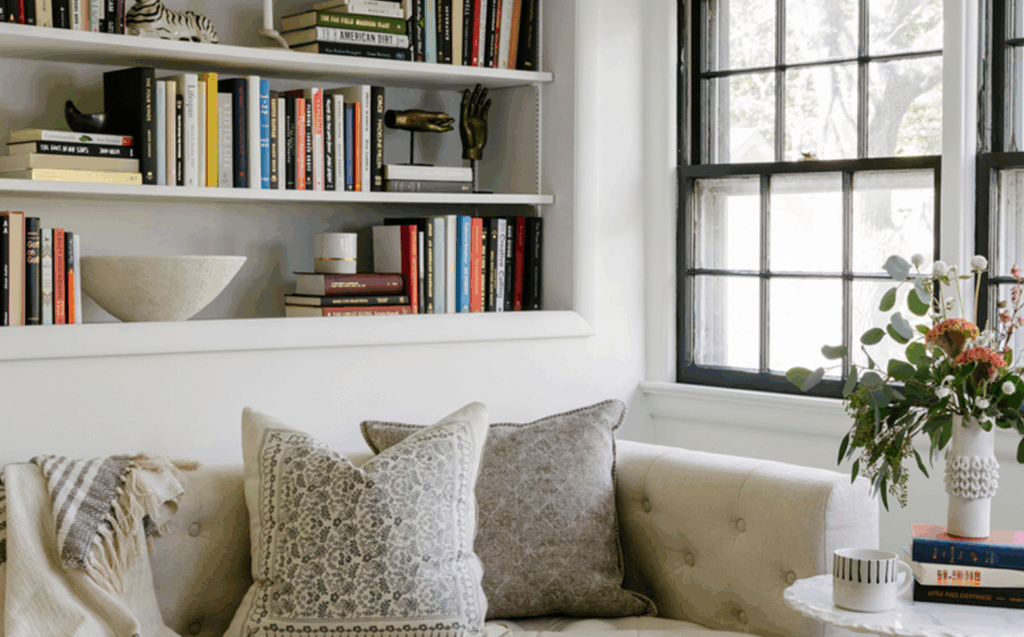
The Importance of Negative Space
Don’t overcrowd your shelves! Negative space, or the empty space around objects, is just as important as the objects themselves. It allows the eye to rest and prevents the display from feeling cluttered and overwhelming. Leave some breathing room around your items to highlight their individual beauty and create a sense of spaciousness.
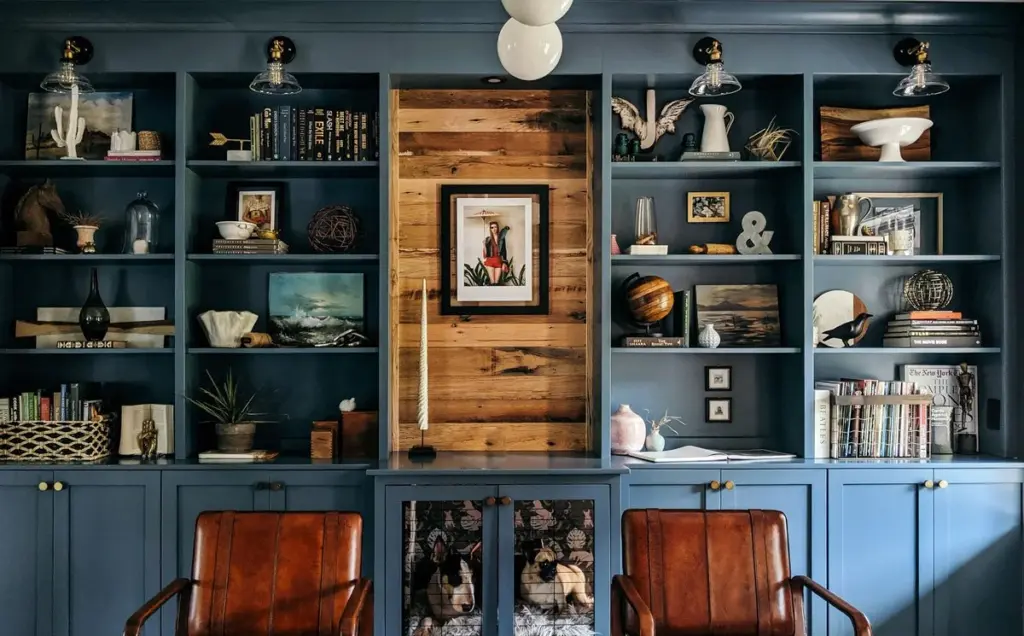
Consider Your Bookshelf’s Style
The style of your bookshelf itself will influence your decorating choices. A modern, minimalist bookshelf will lend itself to a different aesthetic than a rustic, antique one. Work with the existing style to create a cohesive and harmonious look. If you have a built-in bookshelf, consider painting the back of the shelves a contrasting color to add depth and dimension.
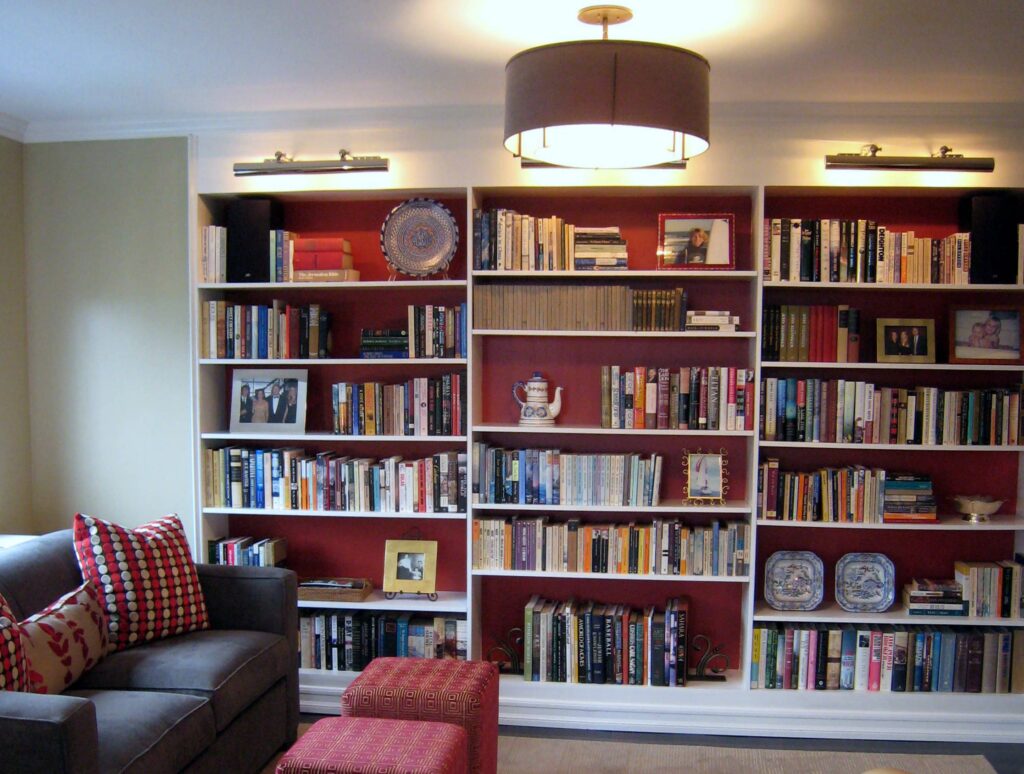
Decorating Ideas: A World of Possibilities
Now for the fun part! Let’s explore a wide range of decorating ideas to spark your imagination and help you create a bookshelf that truly reflects your personality.
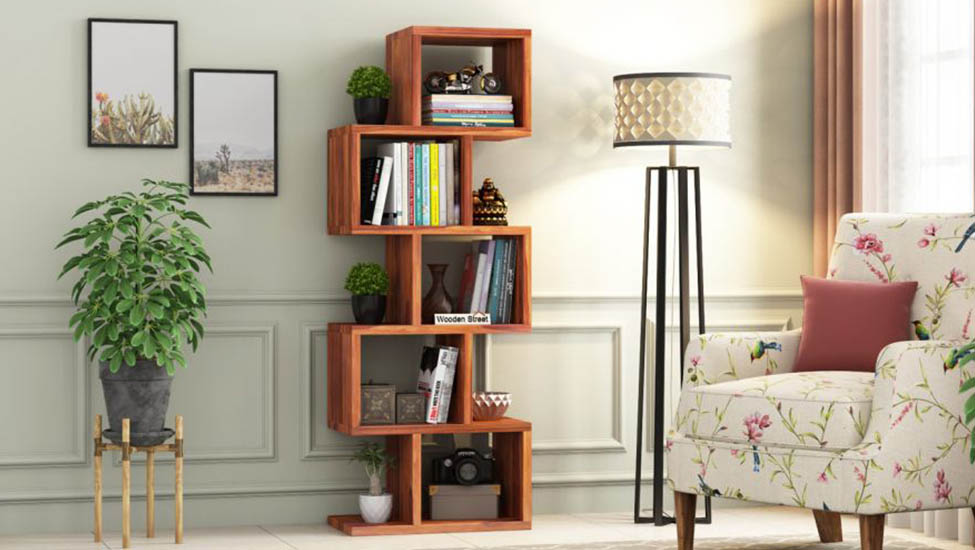
Books as Decor: Beyond Just Stacking
Of course, books are the stars of the show! But there’s more to book display than simply lining them up in rows.
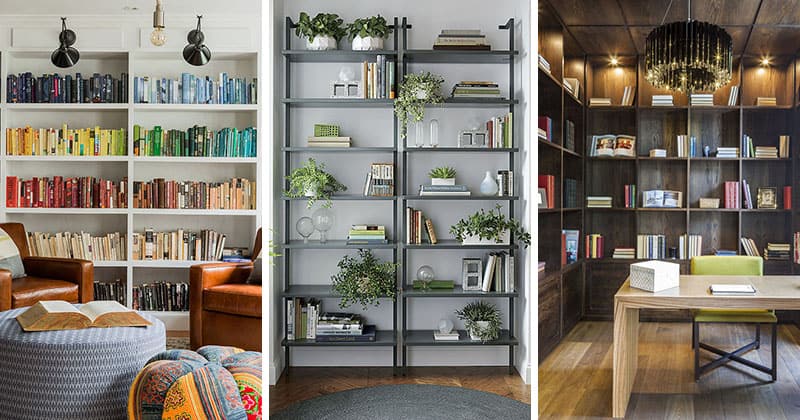
- Stacking Vertically and Horizontally: Mix it up! Alternate between vertical and horizontal stacks to create visual interest and break up the monotony.
- Bookends with Character: Bookends are not just functional; they’re also decorative elements. Choose bookends that reflect your style, whether it’s a pair of antique globes, whimsical animal figurines, or sleek geometric shapes.
- Dust Jackets: If you’re going for a specific color scheme, consider removing or covering the dust jackets of your books. You can use craft paper in your desired color for a uniform look.
- Face Forward: Displaying a few books with their covers facing forward can add a pop of color and showcase your favorite authors or titles.
- Organize by Color: Arrange books by the color of their spines for a visually stunning and modern effect. This can be particularly effective with a large collection.
Introducing Decorative Objects: Adding Personality and Flair
Decorative objects are essential for adding personality and visual interest to your bookshelf.
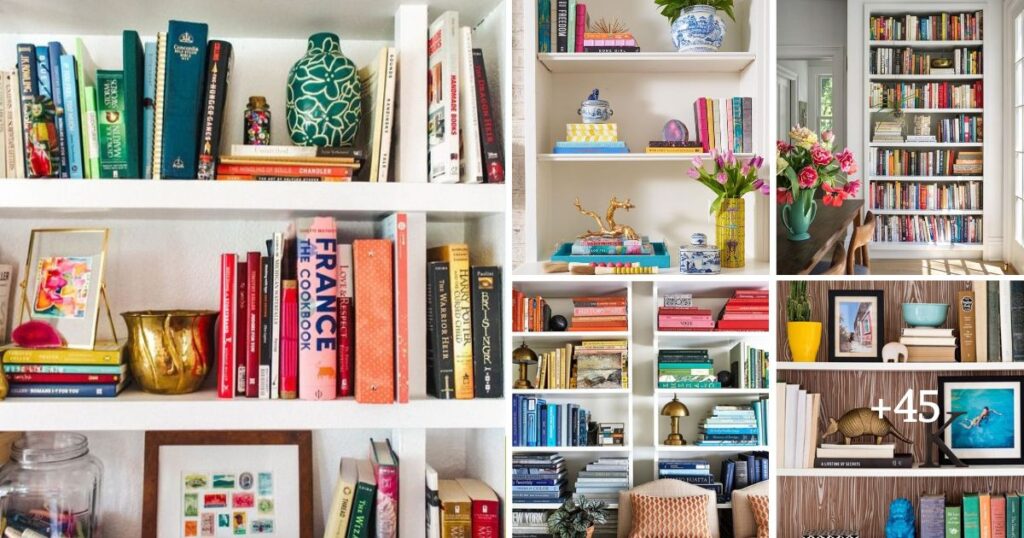
- Plants: Greenery brings life and freshness to any space. Choose low-maintenance plants like succulents, air plants, or trailing vines that can cascade down the shelves.
- Vases and Pottery: Vases and pottery add texture and dimension. Fill them with fresh flowers, dried stems, or simply leave them empty as sculptural objects.
- Picture Frames: Displaying framed photos of loved ones or cherished memories adds a personal touch.
- Artwork: Small paintings, prints, or sculptures can transform your bookshelf into a miniature art gallery.
- Globes: Globes add a touch of vintage charm and a sense of wanderlust.
- Boxes and Baskets: Use decorative boxes and baskets to conceal clutter and add texture.
- Candles: Candles create a warm and inviting ambiance. Choose scented candles to add fragrance to your space.
- Figurines and Collectibles: Display your favorite figurines, collectibles, or travel souvenirs to showcase your personality and interests.
- Mirrors: Small mirrors can reflect light and create the illusion of more space.
Lighting: Illuminating Your Bookshelf
Lighting is often overlooked, but it can make a huge difference in the overall impact of your bookshelf display.
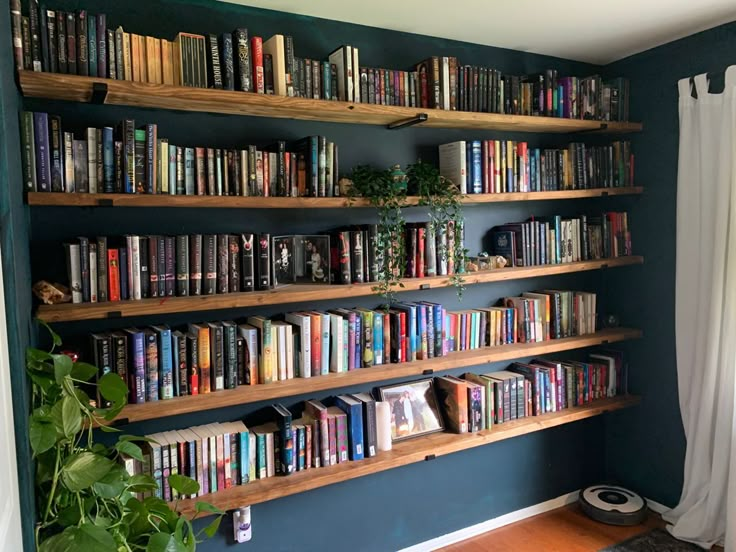
- Bookshelf Lighting: Install strip lights or individual spotlights to illuminate your books and decorative objects.
- Table Lamps: Place a table lamp on a nearby surface to provide ambient lighting and highlight the bookshelf.
- Candles: Candles add a warm and inviting glow.
Themes: Creating a Cohesive Narrative
Choosing a theme can help you create a cohesive and visually appealing bookshelf display. Here are a few theme ideas:
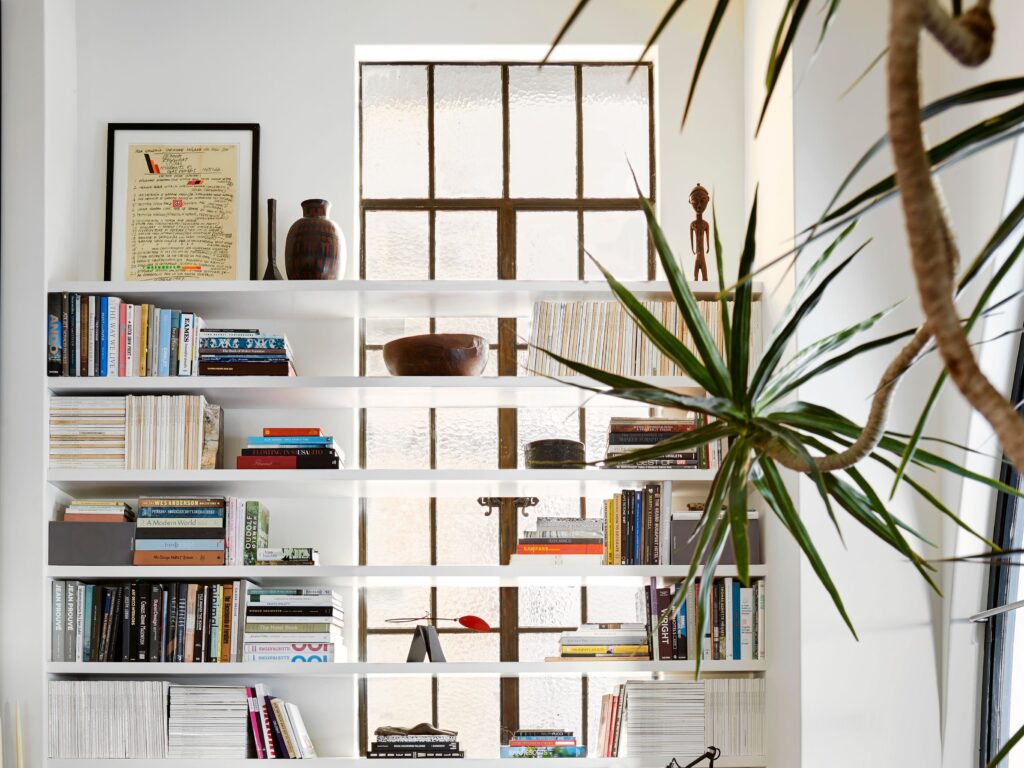
- Travel: Display travel souvenirs, maps, globes, and books about different cultures.
- Nature: Incorporate plants, natural elements like rocks and shells, and books about nature.
- Vintage: Use antique books, vintage photographs, and retro accessories.
- Minimalist: Keep it simple and uncluttered with a few carefully chosen objects in a neutral color palette.
- Bohemian: Mix and match patterns, textures, and colors for a vibrant and eclectic look.
Tips and Tricks: Mastering the Art of Bookshelf Decoration
Here are some additional tips and tricks to help you create a bookshelf that you’ll love.
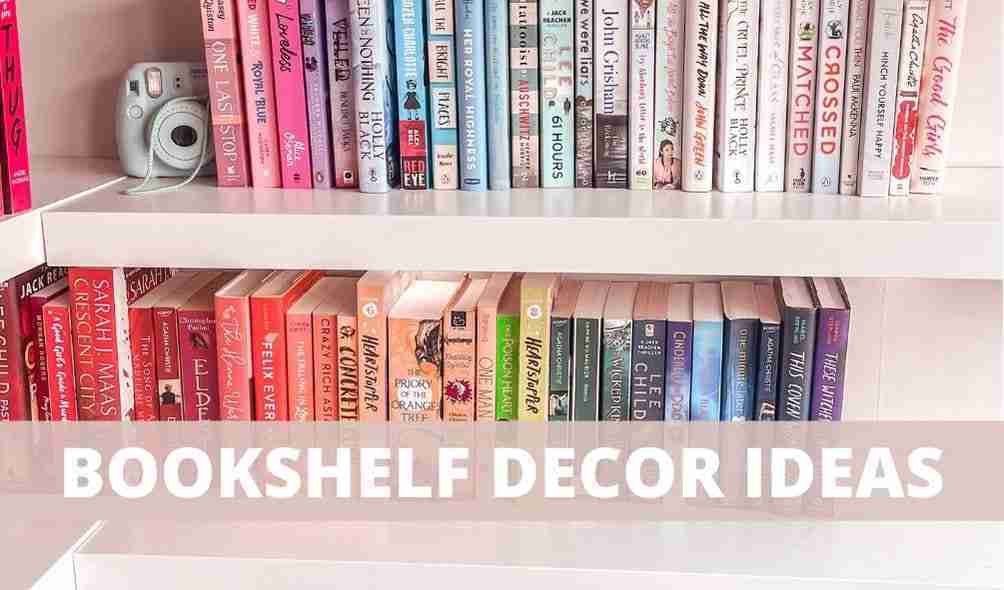
- Start with a Clean Slate: Before you start decorating, remove everything from your bookshelf and give it a good cleaning.
- Edit Ruthlessly: Be honest with yourself about what you truly love and need. Get rid of anything that doesn’t spark joy or serve a purpose.
- Vary Heights: Create visual interest by varying the heights of the objects on your shelves. Use risers or stacks of books to elevate smaller items.
- Group in Odd Numbers: Odd numbers are generally more visually appealing than even numbers. Try grouping objects in threes, fives, or sevens.
- Pay Attention to Texture: Mix and match different textures to add depth and dimension. Use materials like wood, metal, glass, and fabric.
- Don’t Be Afraid to Experiment: There are no hard and fast rules when it comes to bookshelf decoration. Experiment with different arrangements and see what works best for you.
- Take a Step Back: Once you’ve finished decorating, take a step back and assess your work. Make adjustments as needed to achieve the desired look.
- Rotate Your Display: Keep your bookshelf fresh and interesting by rotating your display every few months. This will give you a chance to showcase different items and keep your space feeling new.
- Consider Functionality: While aesthetics are important, don’t forget about functionality. Make sure your bookshelf is still practical for storing your books and other items.
- Personalize It: The most important thing is to create a bookshelf that reflects your personality and style. Don’t be afraid to break the rules and express yourself!
Common Mistakes to Avoid: Ensuring a Polished Look
Even with the best intentions, some common mistakes can derail your bookshelf decorating efforts. Let’s address a few:
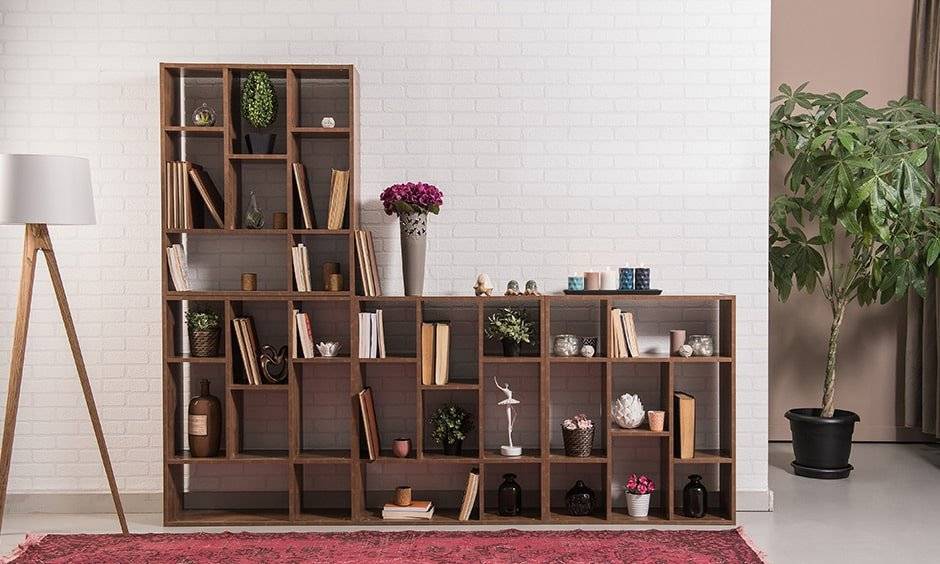
- Overcrowding: We mentioned it before, but it’s worth repeating. Too much stuff crammed onto your shelves creates a cluttered and overwhelming look. Resist the urge to fill every available space.
- Neglecting the Vertical Space: Don’t just focus on the horizontal shelves. Utilize the vertical space by hanging artwork or creating vertical stacks of books.
- Ignoring the Back of the Bookshelf: The back of your bookshelf can be a great opportunity to add visual interest. Consider painting it a contrasting color or adding wallpaper.
- Lack of Cohesion: A random assortment of objects without any sense of cohesion can look disjointed and messy. Choose items that complement each other in terms of color, style, and theme.
- Forgetting About Scale: Make sure the objects you’re using are appropriately sized for your bookshelf. A tiny figurine will get lost on a large shelf, while a giant vase might overwhelm a smaller one.
- Poor Lighting: Insufficient lighting can make your bookshelf look dark and uninviting. Add lamps or spotlights to highlight your display.
- Ignoring Dust: Dust is the enemy of a beautiful bookshelf! Regularly dust your shelves and objects to keep them looking their best.
Beyond the Living Room: Bookshelves in Other Spaces
While bookshelves are commonly found in living rooms and studies, don’t limit yourself! They can be a stylish and functional addition to other areas of your home as well.
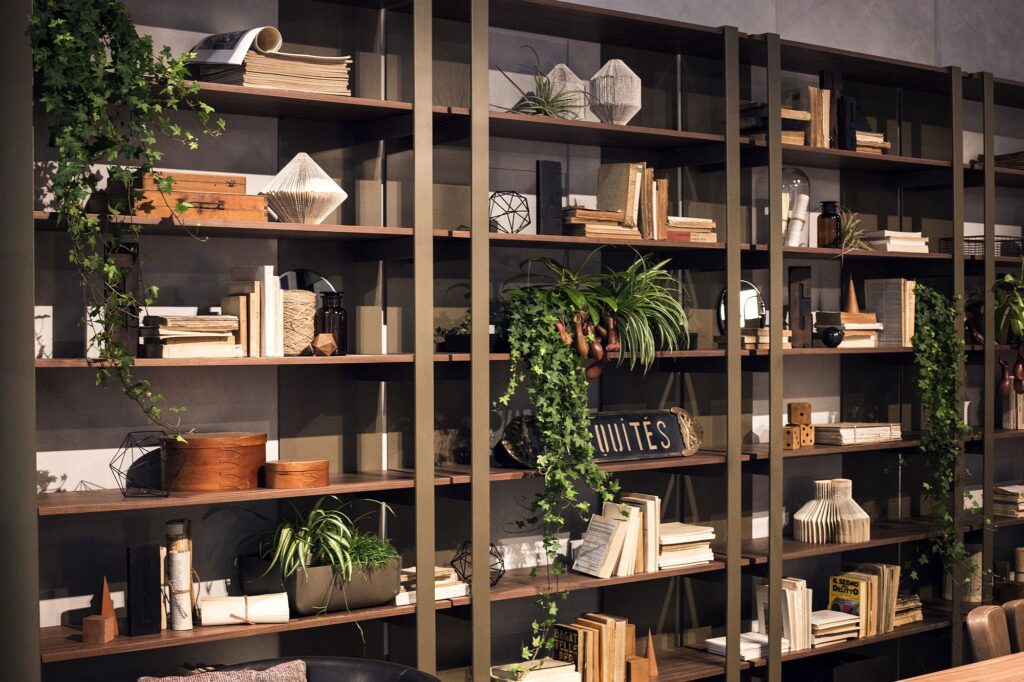
- Bedroom: A bookshelf in the bedroom can serve as a nightstand, a display for books and personal items, or even a room divider.
- Kitchen: A bookshelf in the kitchen can be used to store cookbooks, spices, and other kitchen essentials.
- Bathroom: A small bookshelf in the bathroom can hold towels, toiletries, and decorative items. Just be mindful of moisture!
- Entryway: A bookshelf in the entryway can provide a place to store keys, mail, and other essentials, as well as a welcoming display for guests.
- Home Office: A bookshelf in the home office is essential for storing books, files, and office supplies.
DIY Bookshelf Decor: Adding a Personal Touch
Want to take your bookshelf decorating to the next level? Try creating some of your own DIY decorations! This is a great way to add a personal touch and save money.
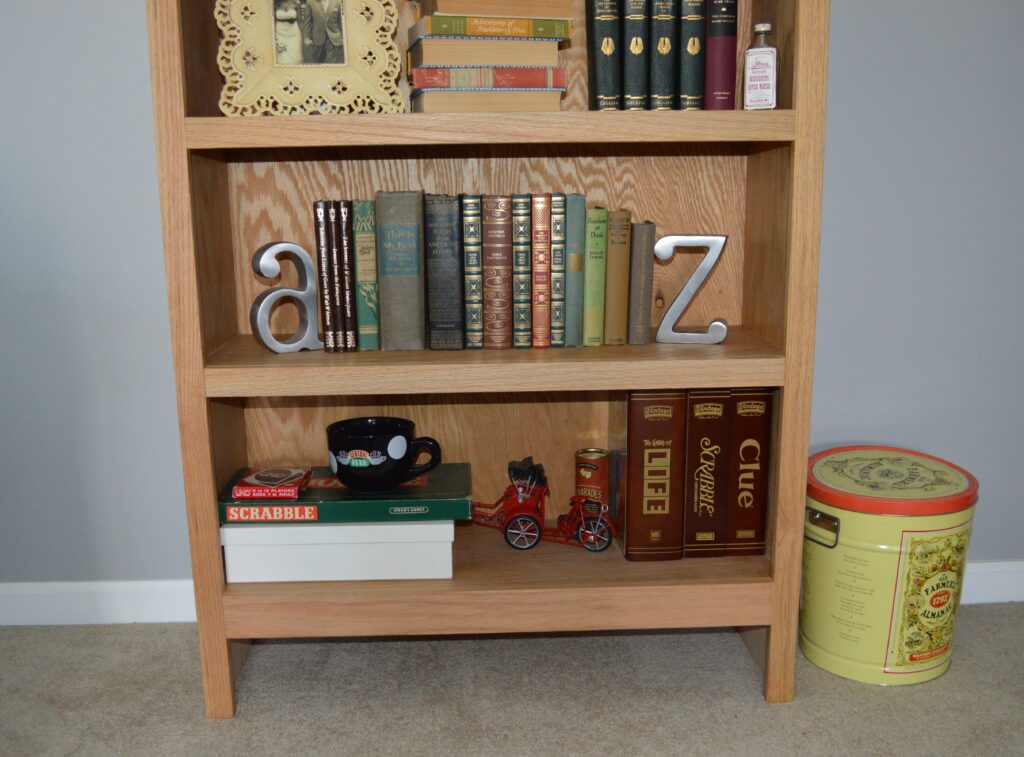
- Painted Bookends: Paint plain wooden bookends in your favorite colors or patterns.
- DIY Artwork: Create your own artwork using paint, fabric, or other materials.
- Repurposed Jars: Decorate old jars and use them to hold small objects like beads or buttons.
- Fabric-Covered Boxes: Cover plain cardboard boxes with fabric to create stylish storage containers.
- String Art: Create string art designs on wooden boards and display them on your bookshelf.
- Origami: Fold origami creations and use them as decorative accents.
Conclusion: A Bookshelf That Tells Your Story
Decorating your bookshelf is an opportunity to express your creativity, showcase your personality, and create a space that you truly love. By following these tips and tricks, you can transform a simple piece of furniture into a captivating display that tells your story and enhances the beauty of your home. So, gather your favorite books, decorative objects, and a healthy dose of inspiration, and get ready to create a bookshelf that’s both beautiful and uniquely yours!
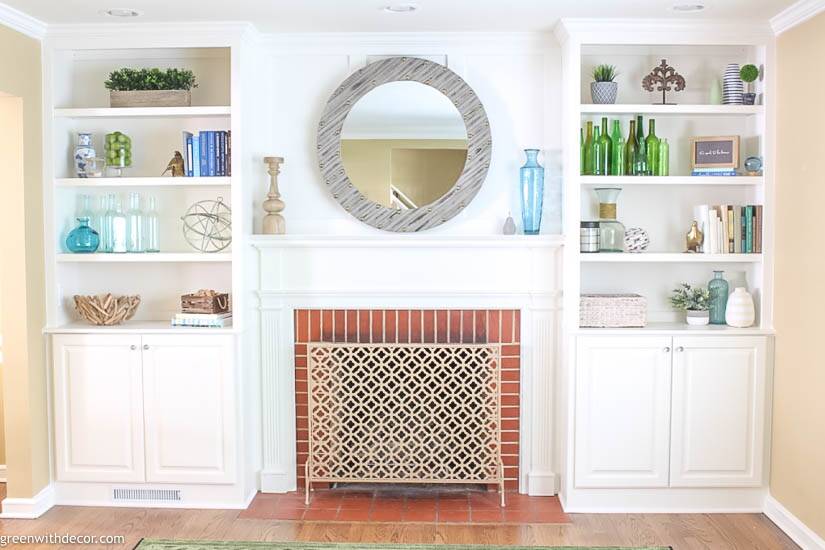
Remember, the key is to have fun and experiment until you find a style that you truly love. Don’t be afraid to break the rules and create something that’s completely original. After all, your bookshelf is a reflection of you, so let it shine!
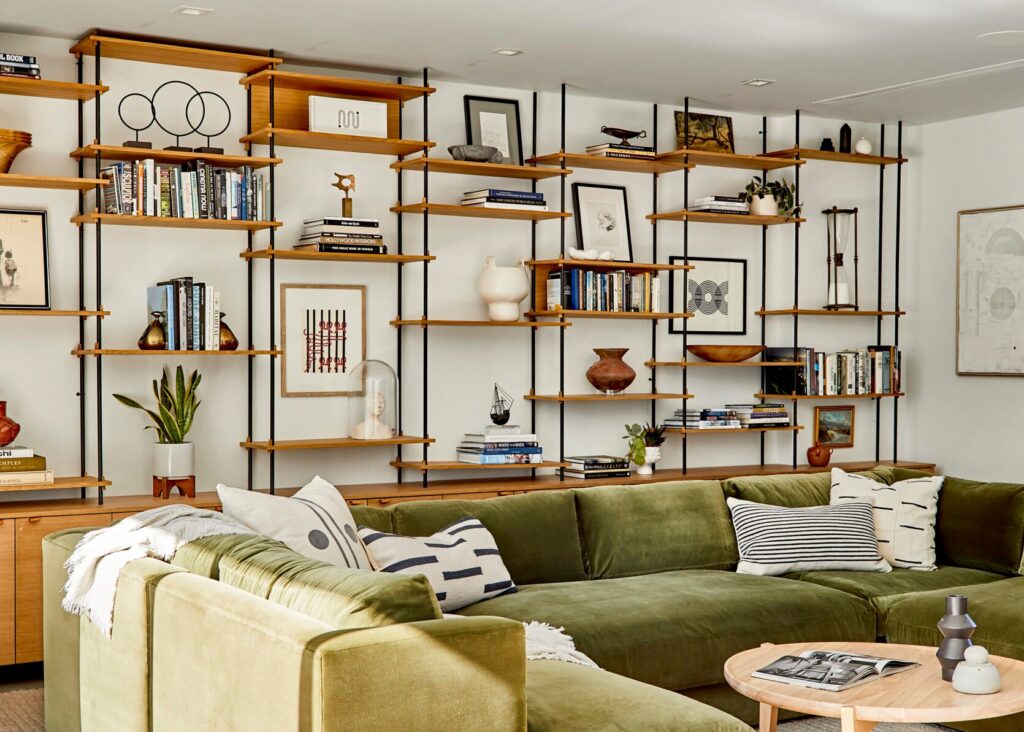
Happy decorating!
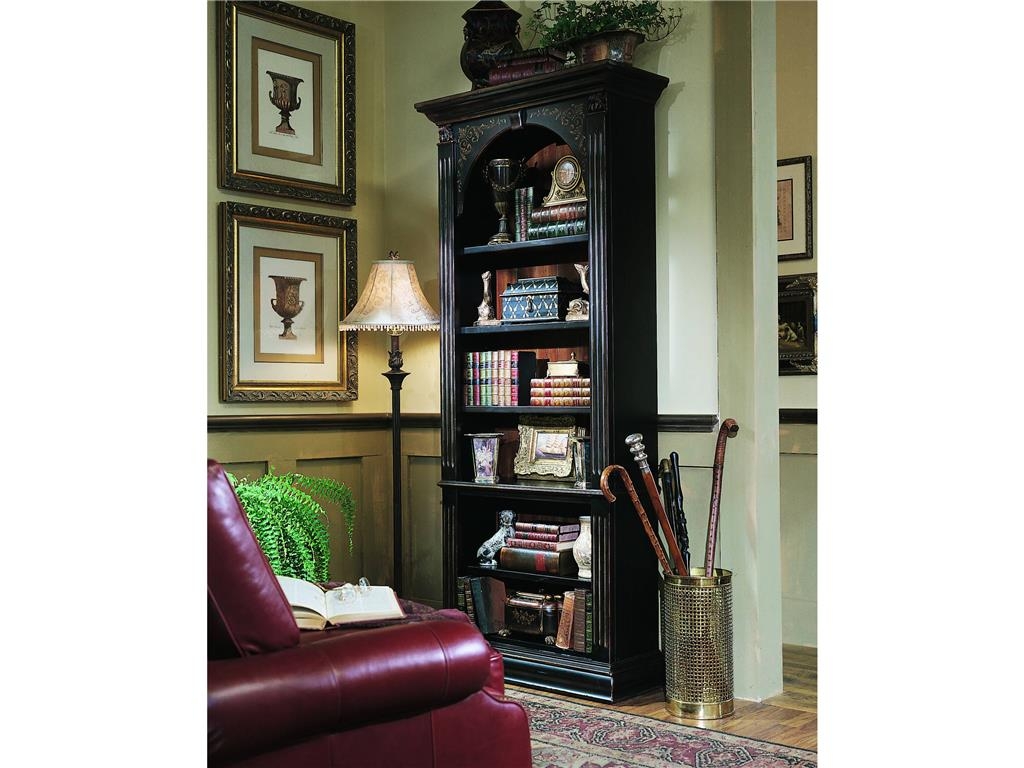
 Nimila
Nimila
